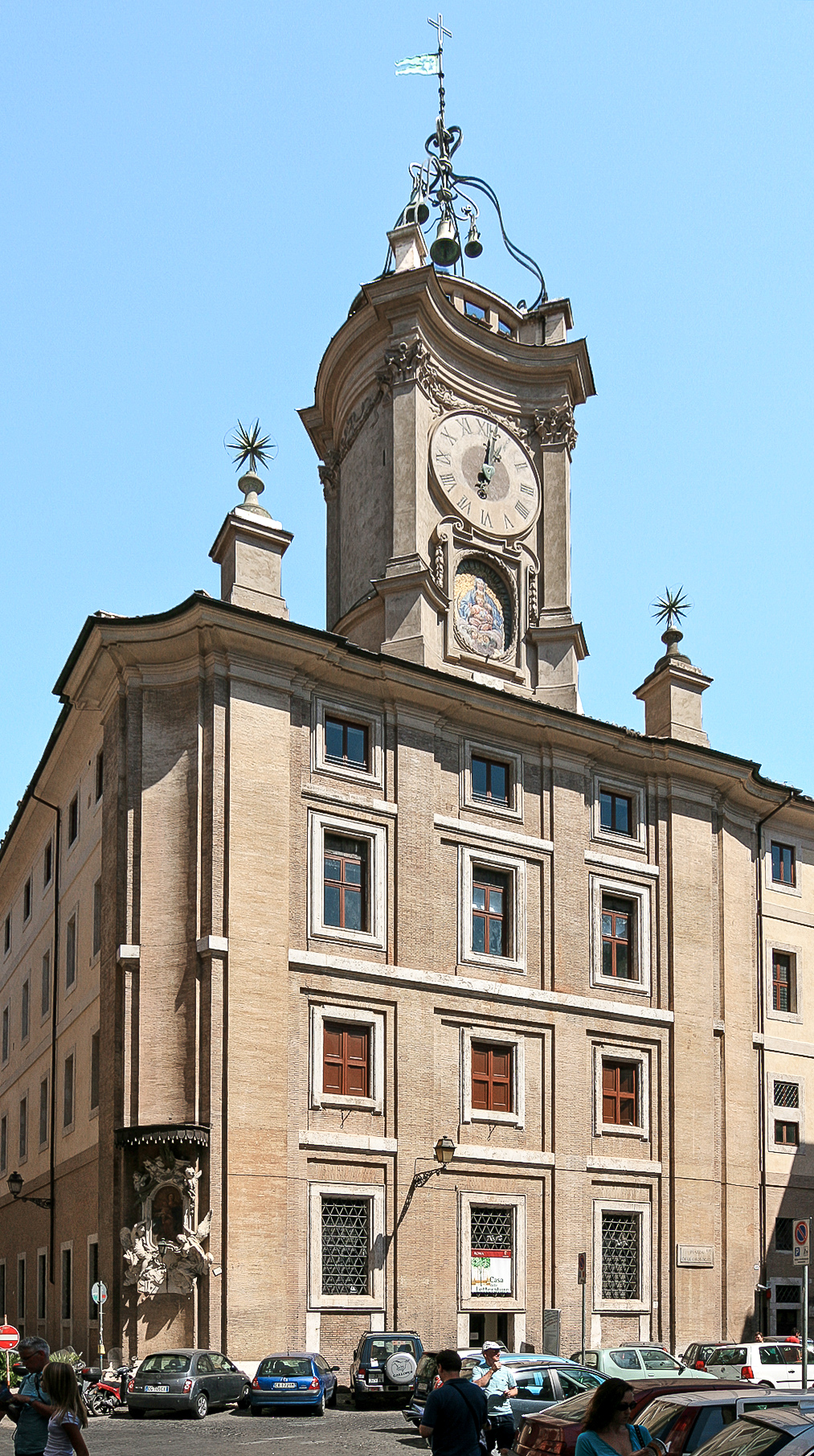Oratorio Dei Filippini on:
[Wikipedia]
[Google]
[Amazon]

 The Oratorio dei Filippini (Oratory of Saint Philip Neri) is a building located in Rome and erected between 1637 and 1650 under the supervision of architect
The Oratorio dei Filippini (Oratory of Saint Philip Neri) is a building located in Rome and erected between 1637 and 1650 under the supervision of architect

 The Oratorio dei Filippini (Oratory of Saint Philip Neri) is a building located in Rome and erected between 1637 and 1650 under the supervision of architect
The Oratorio dei Filippini (Oratory of Saint Philip Neri) is a building located in Rome and erected between 1637 and 1650 under the supervision of architect Francesco Borromini
Francesco Borromini (, ), byname of Francesco Castelli (; 25 September 1599 – 2 August 1667), was an Italian architect born in the modern Switzerland, Swiss canton of Ticino
- in his distinctive style. The oratory is adjacent to the Chiesa Nuova Santa Maria in Vallicella
Santa Maria in Vallicella, also called Chiesa Nuova, is a church in Rome, Italy, which today faces onto the main thoroughfare of the Corso Vittorio Emanuele and the corner of Via della Chiesa Nuova. It is the principal church of the Oratorians ...
, the mother church of the congregation. In front of the two sides was a small closed square, now integrated in the Corso Vittorio Emanuele II.
History
The congregation of the Filippini already had one of the most well-decoratedBaroque
The Baroque ( , , ) is a Western Style (visual arts), style of Baroque architecture, architecture, Baroque music, music, Baroque dance, dance, Baroque painting, painting, Baroque sculpture, sculpture, poetry, and other arts that flourished from ...
churches in Rome, and the order had planned to build an oratory, as well as residential quarters, adjacent to the church of Santa Maria in Vallicella
Santa Maria in Vallicella, also called Chiesa Nuova, is a church in Rome, Italy, which today faces onto the main thoroughfare of the Corso Vittorio Emanuele and the corner of Via della Chiesa Nuova. It is the principal church of the Oratorians ...
(Chiesa Nuova) located in crowded central Rome. Originally, Ortario dei Filippini was also meant to be a place for the Filippini to practice their own, unique, inventive style of prayer. Borromini won a competition for designing the structure against many including Paolo Maruscelli. He was employed in the task for 13 years, often a testy process. By 1640, the oratory was in use, and by 1643, the library, called the '' Biblioteca Vallicelliana'', was complete. Borromini later became occupied by the construction of many components of the building such as the façade, two courtyards, the refectory, recreational rooms, the Biblioteca Vallicelliana, and the clock tower. Camillo Artucci became the designer after Borromini left the job in 1650 due to conflicts with the Fillipini Congregation.
Description
Exterior Though the facade is large compared the structures behind it, it was meant to be second best to the adjacent church in terms of materials and size. The facade provides a summary of Borromini's characteristics of innovations style, both austere and technically rigorous. The main body is divided into five parts by pilasters following a concave curve. In the central part, a dynamic appears between the lower level, whose curve moves outward, and the upper level which curves inward. This panel-clad façade of the Oratorio dei Filippini was designed to mimic the human body with open arms for those wanting to worship there. The façade is decorated with upper and lower pilasters with Corinthian capitals. At the corner of the oratory, on the Piazza dell'Orologio, Borromini raised a turret with a clock (1647–1649). Interior Inside the oratory is articulated by half columns and a complex rhythm of pilasters. Today, a room in the Oratorio dei Filippini, known as the Sala Borromini, functions similarly to a town hall as meetings and debates are held there. The Ortario dei Filippini features a library called Biblioteca Vallicelliana which is distinguished by a staircase with a depiction of a Bellonian priest. In the staircase leading up to the library one can admire the full scaleplaster
Plaster is a building material used for the protective or decorative coating of walls and ceilings and for moulding and casting decorative elements. In English, "plaster" usually means a material used for the interiors of buildings, while "re ...
models of Alessandro Algardi's reliefs of ''The Encounter of Attila and Pope Leo'' (the finished marble is in St. Peter's Basilica
The Papal Basilica of Saint Peter in the Vatican (), or simply St. Peter's Basilica (; ), is a church of the Italian High Renaissance located in Vatican City, an independent microstate enclaved within the city of Rome, Italy. It was initiall ...
) and ''The Miracle of Saint Agnes'' (executed by Algardi's assistants Ercole Ferrata and Domenico Guidi; the marble version, destined to become the main altarpiece in Sant'Agnese in Agone
Sant'Agnese in Agone (also called Sant'Agnese in Piazza Navona) is a 17th-century Baroque church in Rome, Italy. It faces onto the Piazza Navona, one of the main urban spaces in the historic centre of the city and the site where the Early Christ ...
was never made).
The shape of the music hall inside Oratorio dei Filippini lends itself to acoustics and the distribution of sound. The long, rectangular design allows sound to bounce off of the walls and fill the room effectively. The high, curved ceiling pushes sound down to the audience below. This is important because the Filippini used music as an integral part of their prayer and worship.
Bibliography
* Anthony Blunt, ''Vita e opere di Borromini'', Laterza, Rome-Bari, 1983 * Paolo Portoghesi, ''Francesco Borromini'', Elemond-Electa, Milan, 1990 * Joseph Connors, ''Borromini and the Roman Oratory, Style and Society'', MIT Press, New York and Cambridge, MA, 1980References
{{DEFAULTSORT:Oratorio Dei Filippini Baroque architecture in Rome Baroque architecture in Lazio Roman Catholic churches in Rome Filippini 17th-century Roman Catholic church buildings in Italy Francesco Borromini buildings